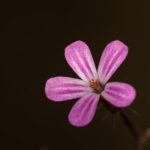Introduction
Plastic bottles gardening is an innovative, eco-friendly way to grow your own vegetables and plants. Using plastic bottles instead of traditional gardening methods saves money, reduces waste, and helps you have fresher, tastier food year-round. It also has several environmental benefits: recycling plastic that would otherwise be thrown away; reducing water use; and limiting the amount of fertilizer needed for the garden. Plus, you don’t need a lot of space to get started — it can be done in a small balcony or patio area. This type of gardening requires some creativity and effort but yields rewarding results. Whether you are an experienced gardener or just getting started with your growing journey, trying out plastic bottle gardening is an engaging and meaningful way to make use of your time while making a positive impact on the environment.
Benefits of Plastic Bottles Gardening
Plastic bottles gardening is an increasingly popular way to reduce your impact on the environment and make use of recycled materials. It involves taking plastic bottles and turning them into durable, reusable containers for growing plants. The clear material allows you to easily monitor root growth and moisture levels, making it easy to check on the health of your garden. Additionally, plastic bottles are lightweight, can be hung from a variety of surfaces, and last longer than traditional ceramic pots.
In addition to reusable containers, plastic bottle gardening is beneficial for the environment in other ways. Rather than producing more natural resources like wood or clay for pottery manufacture, reusing existing plastics helps us save energy and reduce waste. Since polyethylene terephthalate (PET) plastics are almost infinitely recyclable, recycled materials can be collected from households or businesses in order to make more gardening containers that do not need to be thrown away after their intended use.
Furthermore, re-purposed plastic bottles often have more surface area than standard pottery, which allows the water within each container to warm up faster in sunlight— this in turn accelerates germination processes and encourages plant growth. By providing larger amounts of direct sunlight onto the roots while keeping soil at sharper temperatures during prolonged periods of time (dry spells), plastic bottle gardens also have higher drought-resistance rates when compared with regular potted plans; keeping water available on hotter days without overly moistening the soil during cold nights. Finally, having a variety of sizes makes it possible to provide plants with full nourishment by tightly stacking modular units for efficient airflow that enhances photosynthesis.
Preparing the Plastic Bottles for Gardening
In order to get started with plastic bottle gardening, you will need a few materials. First, you will need some empty and clean plastic bottles of various sizes. Smaller bottles work better for seeds than larger bottles as they are easier to transport and store in tight spaces without taking up too much space. You should also make sure you have enough soil to fill the plastic bottles – either purchased potting soil or composted soil that have been treated with a balanced fertilizer is recommended. Further, it may be helpful to have some heavy-duty scissors on hand in order to cut the sides of the plastic bottles off so they can be used as pots for your plants. Finally, don’t forget your seeds! Depending on what kind of plant you’re looking to grow, you’ll need different types of seeds—you can purchase these or collect them from other sources (like wildflowers!) in order to begin. All said and done, with these materials in mind and few bits of know-how regarding planting techniques, your plastic bottle garden should take shape in no time!
Steps to Create a Plastic Bottle Garden
1. Gather Supplies: You will need scissors, potting soil, plants, and of course a few plastic bottles.
2. Prepare the Bottle: Cut the bottom of the plastic bottle off. Place this newly created planter inside another plastic bottle to act as a double-level planter, if desired.
3. Place Potting Soil: Scoop potting soil into each of the bottles with a hollowed-out core leaving about an inch of space at the top for added drainage and air pockets.
4. Plant your Seeds or Seedlings: Place plants/seeds/cuttings into the potting soil ensuring that they are properly distributed within each container. Leave enough space between each one if planting multiple varieties in several containers.
5. Add Water: Water the plants daily or weekly (depending on what type of plant you are proud growing). Keep the environment humid throughout their growing season by spritzing them with a water bottle multiple times throughout the day or whenever necessary due to drying out quickly or wilting leaves. Monitor carefully to determine when it’s time to water again as this will vary depending on your climate/environment and type of plant growing in each container!
6. Maintenance: Inspect your bottles periodically for any signs of mold, rot or pests and take proper corrective action if found before it can spread throughout your garden . Additionally ensure that all containers remain upright and supported for optimal growth potential!
Types of Plants to Grow in a Plastic Bottle Garden
Plastic bottle gardening is becoming increasingly popular for gardeners, since it is a low-cost and easy way to start and maintain a garden. And the best part is that you can use it to grow virtually any type of plant! Popular choices include tomatoes, peppers, herbs, flowers, succulents, and smaller fruits like strawberries.
When deciding what type of plants to grow in your plastic bottle garden, you should consider your location as well as the variety of plants that thrive best in a terrarium type environment. For example, vegetables typically require more sunlight than an enclosed system provides and may not do well. You could opt for varieties that are more shade-tolerant or try cool season crops such as lettuce or spinach. Herbs are generally a great choice for plastic bottle gardens and will thrive even with lower light levels. Flowers can add color and beauty to your garden and some annuals do quite well in containers – look for species specifically bred for containers such as petunias or marigolds. Succulents have become hugely popular due to their ability to store water within their leaves which makes them well-suited for planting in plastic bottles since there’s less need for frequent watering. Fruits like strawberries also do very well in containers provided they are sufficiently drained – so consider adding stones or gravel at the bottom of the container before planting them.
Ways to Supplement Your Plastic Bottle Garden
Nutrients: Providing your plants with the required nutrients they need is essential to getting your plastic bottle garden going. One great way to do this is to compost your food waste; kitchen waste such as vegetable peels and fruit left-overs should be added to a compost bin or pile near your garden, ensuring you are adding more organic material into the soil. You could also use an aquaculture system if you have enough space, where fish poo acts as natural fertilizer and nitrogen-rich worms help aerate the soil while extracting the necessary nutrients.
Water: Watering is critical for any kind of garden, regardless of it being in a plastic bottle or not. However, since a majority of plastic bottle gardening involves small, enclosed containers which can quickly become overly saturated with water, it’s important to practice restraint when watering your plants. A general rule of thumb is to water when the topsoil feels dry or crumbly. If you notice that the container consistently stays wet for long periods of time then you should be wary of overwatering and reduce how often and how much water you give each plant.
Sunlight: While some plants require strong amounts of direct sunlight (exposure greater than six hours per day), many other plants only need five or less hours each day in order to thrive properly. Always check against what level of light intensity is required for specific types of plants before setting up your plastic bottle garden – some containers may get more exposure to direct sunlight depending on their location compared to others in its area. Additionally, supplementing natural sunlight with hydroponic grow lights can ensure that all parts of your plastic bottle garden get adequate lighting that isn’t dependent on nature alone!
Tips for Caring for a Plastic Bottle Garden
1. Be sure to water your plants regularly. When watering your plants, use lukewarm water that is free of chlorine and other chemicals. This is because plastic bottles are not permeable materials and the chemicals can cause damage to the root system.
2. Plant your seeds and seedlings with care. Make sure that you insert the roots into the soil gently, otherwise they could suffer from shock or damage and die off before they have a chance to become established in their new environment.
3. Give your plants plenty of sunlight and ventilation while they are growing in the bottle garden. The atmosphere inside the plastic bottle will be more humid than the air outside so make sure there is adequate ventilation for your plants to take in oxygen and prevent diseases due to excess moisture levels.
4. Pruning is important for keeping control of plant growth with a plastic bottle garden, but be aware of how much pruning you do as too much could lead to stunted growth or even death of some parts of the plant due to damage from over-pruning.
5. Fertilize your plants as necessary, using a liquid fertilizer made specifically for container gardening in order to add extra nutrition for your plants and ensure better yields from them.. Try out different blends of fertilizer until you find one that works best for all of your plants, as different varieties may require different kinds for better performance or stronger yields when harvested
Conclusion
Plastic bottle gardening offers an easy way to grow plants without taking up a lot of space. It can be used both indoors and outdoors, making it a versatile option for any space. It also allows you to easily move your garden around, meaning you’ll get the maximum benefit out of the space available. With some creativity, you can turn even the smallest spot in your home or yard into an attractive and productive garden space. Now that you know all about plastic bottle gardening and its many benefits, it’s time to put it into practice and reap the rewards! Start assembling some plastic bottles today and see for yourself how effective mini greenhouses can be for growing delicious fruits and vegetables. You could even get creative by creating fun shapes or designs out of different colored bottles to add an artistic touch to your new garden paradise!

Welcome to my gardening blog! I am passionate about plants and enjoy sharing my knowledge and experiences with others. In this blog, I will write about everything related to gardening, from tips on how to get started to updates on my own garden projects.





